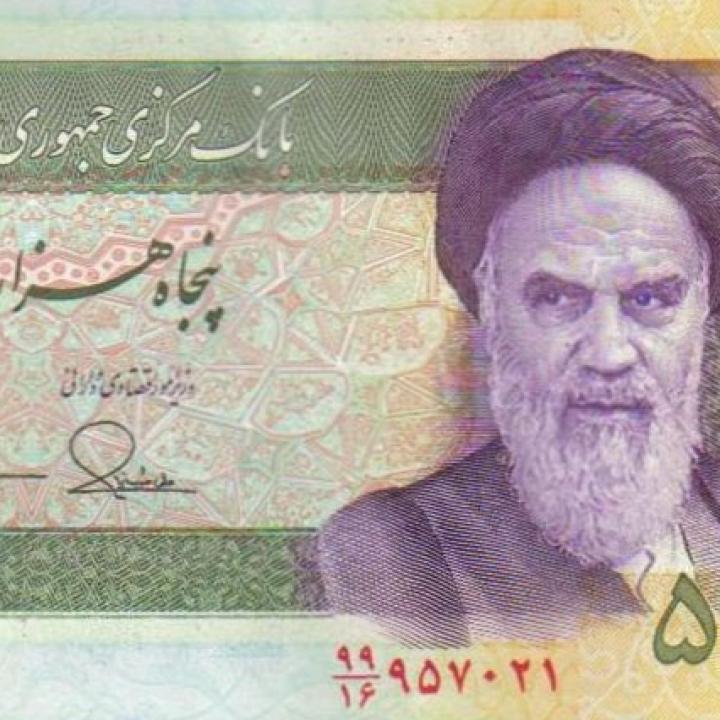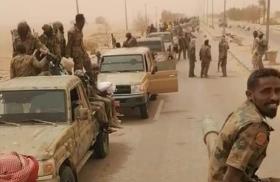
- Policy Analysis
- PolicyWatch 2983
Iran’s Vulnerabilities to U.S. Sanctions (Part 1): Finding the Weak Spots

The regime’s most vulnerable point is its precarious banking system, whose persistent mismanagement, capital shortfalls, and lack of transparency have already sparked public protests.
This PolicyWatch is the first in a two-part series on renewing U.S. sanctions. Read Part 2, which discusses the specific types of old and new sanctions Washington has at its disposal.
As the Trump administration prepares to ramp up sanctions against various Iranian entities following U.S. withdrawal from the nuclear deal, two forces will undermine the impact of any financial actions, while two others will reinforce them. On the negative side, the Iranians have much experience dealing with sanctions and have become adept at finding new workarounds when old ones are blocked. Public statements by Iranian leaders indicate they are quite confident that the new U.S. actions will be a nuisance but not more. The challenge for Washington is to convince them that the pain will be greater than expected, and that it will grow over time.
The second headwind facing sanctions is Iran’s long experience dealing with dramatic fluctuations in oil export income. The sharp sanctions of 2012 caused this income to plummet from $118 billion in the Iranian year 2011/12 to $63 billion the next year. When oil prices dropped in 2015/16, Iran’s oil exports fell again, from $55 billion to $27 billion, despite the Joint Comprehensive Plan of Action entering into force. Iran has lived with even lower levels of oil revenue: in 2001/02, when it was vigorously pursuing a nuclear weapons program and hiding its enrichment capacity, its exports were just $19 billion. Thus, even if its 2018/19 export revenue falls 20% below the IMF’s forecast of $78 billion (based on predicted exports of 3 million barrels per day), it would still be three times the 2001/02 figure. Moreover, with the world economy heating up and oil giant Venezuela melting down, prices may be robust enough to offset any major sanctions-related drop in Iran’s export volume. Since January, Tehran has sold its heavy crude at an average of $64 per barrel, compared to the 2017 average of $51; this means its revenue would be constant even if its volume fell by 20%.
Yet two other factors would reinforce the impact of U.S. sanctions. First, many international businesses and financial institutions are scarred by the unexpected economic crises and tough regulations of the past decade and have adopted more-thorough “de-risking” policies in response. How individual firms assess doing business in high-risk jurisdictions is more important than whether foreign governments are willing to cooperate with U.S. sanctions, since the firms are the ones actually carrying out economic activity. Major European companies such as Total and Maersk have already announced their departure from the Iranian market in recent weeks, showing that the British, French, German, and EU foreign ministers were correct in their June 4 letter to Secretary of State Mike Pompeo and Treasury Secretary Steven Mnuchin: “U.S. secondary sanctions could prevent the European Union from continuing meaningful sanctions relief to Iran.” On June 6, the European Commission updated its Blocking Statute to prohibit EU firms from complying with American sanctions, but individual companies are more likely to avoid doing business with Iran than invoke this protective measure.
Second, as described in the next section, the Iranian regime’s most vulnerable weak spot is financial transactions. This is also the very sector that U.S. sanctions tend to target most often and most effectively, as will be discussed at length in Part 2 of this PolicyWatch.
IRAN’S PRECARIOUS BANKING SYSTEM
The Islamic Republic’s banking problems go well beyond the Financial Action Task Force’s oft-stated concerns about money laundering and terrorism financing. For one, few Iranian banks comply with international standards for preventing tax avoidance by foreign depositors. Thus, any international banks that deal with noncompliant Iranian institutions can be ordered to pay the U.S. income tax owed by depositors. Iranian banks also acknowledge that they do not meet the 8% “minimum capital adequacy ratio” (plus a 2.5% cushion) required by the Basel III accord, forcing any foreign banks that do business with them to take stringent precautions.
Worse, the scope of such problems is not entirely clear because most Iranian banks are not transparent about their financial situation. Only a handful of private firms have met the 2016 Central Bank of Iran (CBI) requirement to state their accounts according to the domestic version of the International Financial Reporting Standards—a version that even Iranian accountants describe as deficient. The three banks that did adhere to the IFRS in 2017 saw their share prices decline so quickly that the Tehran Stock Exchange suspended trading in them for a year. When trading resumed this March, the share price of the largest affected bank (Saderat) declined 49% in a day, and the firm has not used IFRS since. In a May 16 report by Asharq al-Awsat, Gholamreza Salami of the Iranian Institute of Certified Accountants complained that influential people who benefit from the lack of transparency are behind the postponement of IFRS standards. The article quoted other experts saying that banks are evading the requirement because complying would reveal that they do not have sufficient capital to continue doing business.
According to a March IMF report, Iranian banks claimed that their capital adequacy ratio was 4.9% at the end of June 2017, down from 5.2% a year earlier—a dangerously low level. They also acknowledged that 11.4% of their loans were nonperforming, though Iranian rules discourage classifying loans as nonperforming; they can only be written off over ten years and when they are 100% provisioned. Iranian banks do not appear to have faced the reality that many of their housing investments and loans are underwater because housing prices stagnated or declined for five years (that situation is improving as housing prices in major cities have jumped 30% in the past six months).
Iran’s banks are also trapped by the government’s precarious finances. For fifteen years, direct government borrowing from the CBI has been strictly limited by law, so instead the government borrows from private banks, which then get credit from the CBI. As a further complication, various agencies have issued bonds without permission or oversight from the Finance Ministry. And according to the March IMF report, government arrears to suppliers and pension funds have reached 30% of GDP (an equivalent figure for the United States would be $5.5 trillion).
As a result, suppliers and pension funds have to rely on bank loans. To raise more funds for these loans, the CBI would have to lend to banks, which entails printing money and potentially driving inflation back up to the 30% figure it reached when President Hassan Rouhani first came into office. The only other option is for banks to attract new deposits themselves. Yet the CBI has been trying to drive down interest rates by enforcing the widely flouted 15% cap on deposits, spurring many depositors to head to the foreign exchange and gold markets instead. This caused the rial price of gold and the dollar to soar. In February, the CBI temporarily allowed a 20% rate on one-year deposits, but more than 80% of the funds deposited at this higher rate were transfers from existing bank accounts rather than new deposits.
To make matters worse, banks face competition from Iran’s many “credit institutions”—a euphemism for what began as unregulated banks set up by politically well-connected figures such as high-ranking clerics and elites with close ties to the Islamic Revolutionary Guard Corps. In his December budget speech, President Rouhani stated that six of these institutions control an astonishing one-fourth of Iran’s money market. In theory, these institutions are now under CBI rules, but at least one knowledgeable source estimates that 3,500 of them are unregulated.
Emblematic of this situation is the CBI website, which prominently shows a form for reporting unregulated credit institutions. Indeed, many of these entities are basically Ponzi schemes, paying extremely high rates on deposits but with little prospect of being able to match them by earning similar interest on loans. Few of them are covered by Iran’s nascent deposit insurance authority, which has never paid out a penny or ordered any institution to close. When three large regulated credit institutions stopped paying out to depositors late last year, demonstrators took to the streets of Tehran and other cities, which helped spark the larger protest movement that swept the country weeks later. In the end, the government and CBI had to step in and pay 98% of the depositors.
ROUHANI UNABLE TO TACKLE BANK PROBLEMS?
The dysfunction described above has been known for years—as the IMF ominously warned in 2015, “The complexity and severity of the challenges facing the banking system require immediate action.” Yet political deadlock has largely prevented such action. In his December budget speech, Rouhani described the pressures created by failed credit institutions in dire terms: “Around three to four million families were involved in the problems...Society was in disarray, the people were forlorn, and their lives were troubled...Six delinquent credit unions...every day plundered the currency, gold, and real estate markets.” Yet the government has taken only a handful of steps to reform credit institutions and banks, despite years of debate on measures such as a new CBI law.
Iran’s banking problems are solvable: they pale in comparison with those endured in many European countries over the past decade (a mere fraction of what Cyprus and Iceland faced, significantly less than Greece and Portugal, and arguably no worse than Spain and Italy). The Rouhani team’s inability to address these problems has done more to hurt Iran’s economy than have international sanctions, and there are no signs that they will do better in the future.
At the same time, international banks have become much more risk averse after years of recession, and regulators have become much tougher. As foreign institutions shy away from problematic Iranian banks, many entities have resorted to conducting international trade in cash or through shady intermediaries, which creates complications, raises costs, and generates public doubt about the trustworthiness of domestic banks.
Unlike in 2012, banks, not oil exports, are the Iranian regime’s greatest economic vulnerability. The more these banks are isolated from the global financial system, the more difficulty they will have gaining the confidence of Iranians and raising the funds they need. With banks starved of capital, the government has been forced to take or contemplate controversial measures such as cutting spending, driving up the rial/dollar exchange rate (which raises the amount of rials the government gets from oil exports), and printing more money. Yet each of these measures could cause major political problems at home by exacerbating inflation, undercutting confidence in the rial, or otherwise stoking resentment among the general public and connected elites.
Patrick Clawson is the director of research at The Washington Institute and a former senior economist at the IMF and World Bank.



